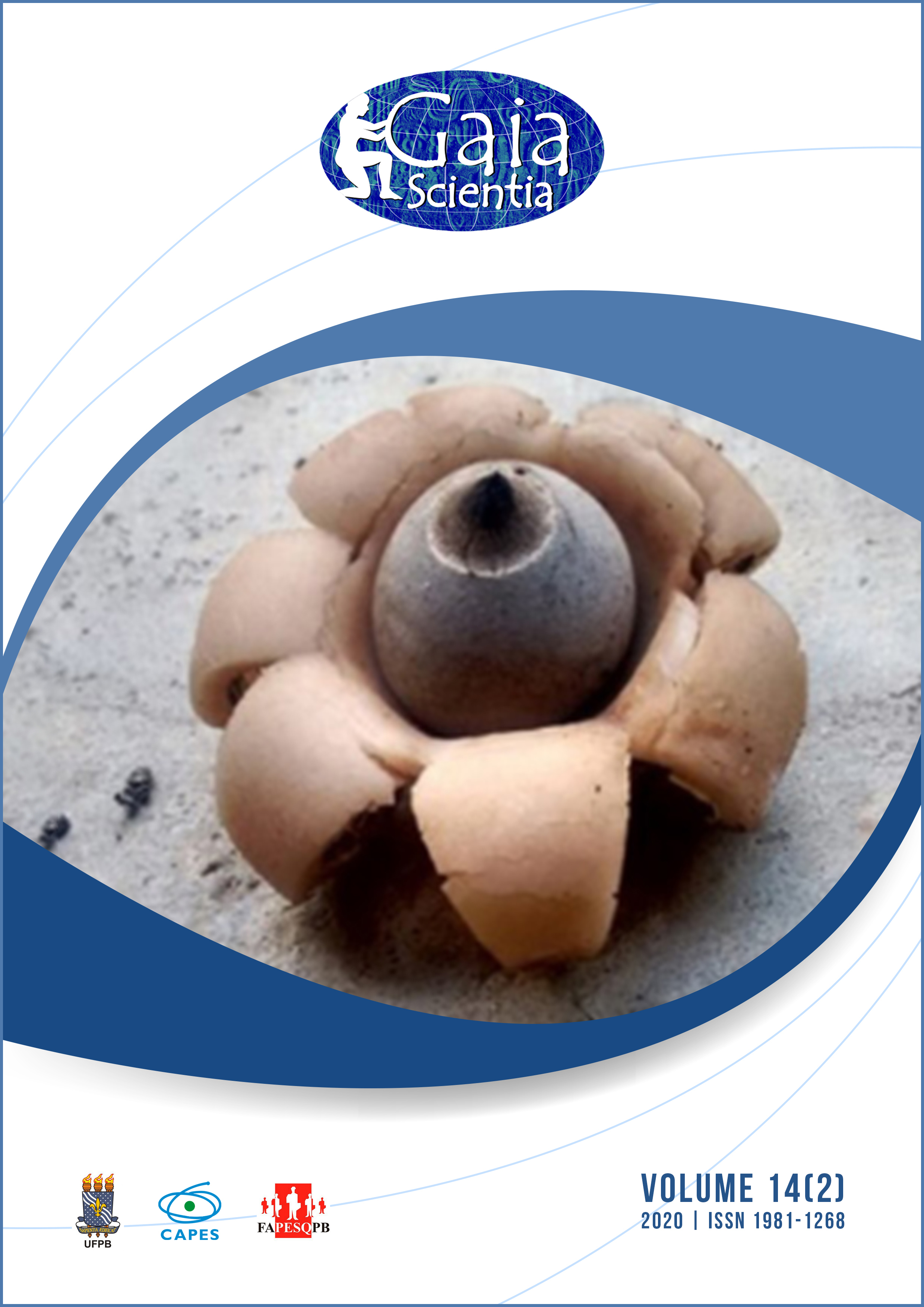CONHECIMENTO ETNOMICOLÓGICO DE COMUNIDADES QUE HABITAM O ENTORNO DA REBIO DE PEDRA TALHADA, ALAGOAS, BRASIL
DOI:
https://doi.org/10.22478/ufpb.1981-1268.2020v14n2.50609Resumo
Estudos etnomicológicos sobre comunidades brasileiras são escassos, quase todos centrados em povos da Amazônia. O presente trabalho teve por objetivo verificar a existência de conhecimento etnomicológico em nove comunidades nordestinas estabelecidas nas proximidades da Reserva Biológica de Pedra Talhada - RBPT (Quebrangulo, AL). Utilizou-se um formulário semiestruturado, um álbum de fotografias e amostras de macrofungos recém-coletadas para entrevistar 61 pessoas (59% homens; 41% mulheres, 18 a 81 anos), a maioria agricultores (70%) com baixo nível de instrução. Quase todos (92%) reconheceram os macrofungos e a maioria citou seus nomes populares, baseados em caracteres morfológicos, associados ao ambiente onde ocorrem (cebola da mata, cogumelo do cocô, orelha de pau) ou às propriedades a eles atribuídas (cogumelo do bem e cogumelo do mal). Percebem a relação desses organismos com o ambiente e a influência dos fatores climáticos sobre sua esporulação. Chás preparados com basidiomicetos foram indicados para tratamento de câncer (Fomes fasciatus) e asma (Ganoderma australe); duas espécies não identificadas foram indicadas para tratamento de problemas respiratórios. Cookeina tricholoma (Ascomycota) foi referida como comestível por um ex-caçador idoso. O uso lúdico foi relatado para uma espécie de Geastrum (Basidiomycota). Embora não micófilos, os entrevistados percebem os macrofungos como elementos importantes no ambiente.
PALAVRAS-CHAVE: Etnobiologia. Etnomicologia. Macrofungos. Mata Atlântica. Micologia.










